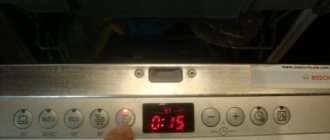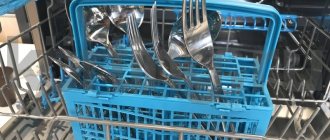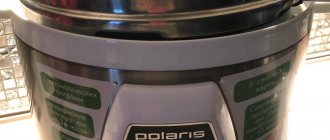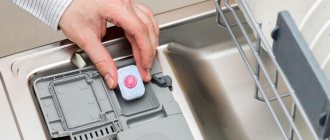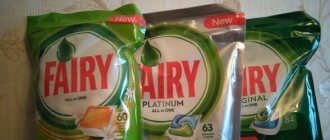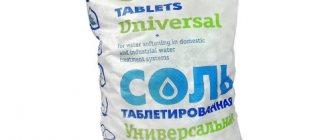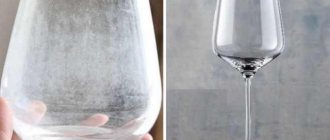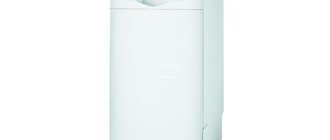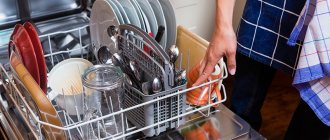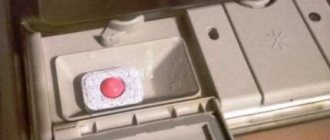What can replace special equipment?
All-purpose dishwasher detergents are not cheap. For example, a 1.3 liter bottle of Calgonit Finish gel costs 1,300 rubles. There are cheaper analogues - powdered and tablets. PMM owners who do not want to spend money on universal products can limit themselves to purchasing:
- Special salt;
- Rinse aids;
- Degreasers.
However, you still can’t do without general cleaning. Every month you need to carry out a “idle” wash with one of the effective detergents - special ones, substitutes like vinegar or citric acid, or compositions prepared independently.
Soda and salt tablets
DIY dishwasher tablets are prepared from:
- 2 cups baking soda;
- 1 cup salt;
- 1 glass of water;
- 1/2 cup citric acid;
- forms.
You need to mix all the dry ingredients and carefully start pouring in the water, as the product will begin to foam. Place the resulting slurry in an ice or cookie tray. Complete hardening time is from 30 minutes to 2 hours.
Main types of chemicals for dishwashers
The most recommended detergents for use in dishwashers come in several common and commonly used categories, such as gel, tablets and powder.
dishwasher detergents
All of these detergents are well suited to any type of dishwasher and effectively cope with their tasks, washing all dishes to a perfect shine.
Let's look at each detergent in more detail:
- Gels. Gel-based detergents are absolutely safe for dishes and do not particularly affect human health, but they do not have a cheap price policy. They remove dirt efficiently without damaging the surface, since they do not contain hard particles and abrasives, so the gel dissolves perfectly when dropped into water. Well suited for washing porcelain and silverware;
- Pills. The pricing policy is more expensive than the other two detergents; they are more convenient to use than powder because they cannot crumble. They please with their high quality of cleaning dishes, one tablet is used for one cycle;
- Powders. Detergents of this type have the cheapest pricing, are convenient and effective to use. Unfortunately, they have negative sides: the powder, when placed in a special compartment of the dishwasher, can scatter by. Also, some chemical components have a hard structure and can scratch the surfaces of delicate dishes.
Is it possible to put baking soda in the dishwasher?
The answer is obvious: you can use it. The main thing is to know the technique of application so that the substance brings a positive result and is not wasted.
The basis of soda is sodium bicarbonate (Na2CO3). It is alkalis (which is what the substance is) that are part of washing powders and detergents. They break down stubborn stains, break down fats and are able to clean any kitchen utensils: from plates to baking sheets.
Important! Using baking soda or soda ash does not mean that there is no need for special equipment. Na2CO3 can become an additional assistant in washing, but is not a substitute for powder, gel, tablets, rinse aid or salt.
Experts do not recommend using soda in its pure form, despite the fact that it is present in every second detergent. This is due to the poor solubility of the component - if you try to dissolve a small amount of powder in a glass of water, you will see this for yourself.
The sediment does not immediately cause a breakdown; it gradually accumulates in the circulation pump, rendering it unusable. Therefore, replacing powder or gel with soda in its pure form will lead to the fact that breakdowns are unlikely to be avoided. And if you alternate homemade products with special ones and do not forget about regular cleaning of the PMM, then there will be no harm from such savings.
Baking soda + hydrogen peroxide
This is a long-known home remedy, for the production of which it is important to maintain proportions.
- Take 180 ml of boiling water and 1 tbsp. l. peroxide and sodium bicarbonate.
It is advisable to pour the mixture into a convenient container and shake.
The product is sprayed onto the contaminated area and left for 8±2 minutes, then washed off.
The disadvantage of this recipe is that for each use you will need to re-prepare the mixture, which quickly loses its cleaning properties during storage.
Instead of peroxide, you can use regular table vinegar.
How to make it yourself
To create a dishwashing detergent, you need to have minimal knowledge of chemistry and strictly follow the instructions. This will help avoid various troubles such as chemical burns and skin irritation.
Ingredients
To make dish soap, you will need different ingredients, depending on the recipe. You can find them at the pharmacy; some substances are worth looking for at home (soda, for example). Missing ingredients can be purchased at the hardware store.
Capacities
If you plan to create tablets, then take care of the molds; preference is given to ice molds. But, naturally, after using them for this purpose, further use for their intended purpose (as ice containers) will be impossible.
Can it be used in PMM?
What we used to call soda, a substance whose packaging design has not changed for years, is scientifically called sodium bicarbonate (NaHCO3). This white fine powder is alkaline in nature, and, as you know, alkalis are an integral component of powders, gels, tablets and capsules for dishwashers. Only thanks to alkalis are old dirt and fats broken down.
Before using a substance, it is worth studying the rules so that the product works and is not simply wasted. Thus, soda ash or baking soda cannot be an independent detergent or cleaning agent - it must be combined with other components.
On a note! Calcined powder, unlike food powder, has a more pronounced effect. But washing dishes should be as careful as possible and involve copious, high-quality rinsing to thoroughly remove any remaining substances from the surface.
Despite the fact that NaHCO3 is a component of household chemicals, dishwasher repair technicians do not recommend using soda for PMM in its pure form. This can easily be explained by the poor solubility of the substance.
Fact! Check for poor solubility of a substance by adding a pinch of NaHCO3 to a glass of water.
The suspension formed when NaHCO3 comes into contact with H2O does not immediately clog the drain pump - but it still inevitably leads to this with regular use. You should think twice before using soda instead of powder - after all, repairing equipment will cost much more than you will save. But if you alternately use homemade and store-bought products and do not neglect regular cleaning of the machine, everything will be fine, experts assure.
How much money does it cost per year?
Saving is one of the arguments for creating “folk recipes”. What amounts are we talking about? Costs depend on the type of special equipment:
- Tablet preparations - 6,000 rubles;
- Gel or powder product - 2000-3000 rubles. But when using them, you also need a rinse aid - plus 1000 rubles. Total 4000-5000 rubles.
A small family spends the same amount to pay for electricity for six months. There is a reason to think about saving.
Recipe No. 4 soap
The soap has excellent cleansing, whitening and foaming properties. To prepare a detergent with this component you will need:
- Grind the soap through a fine grater. Preferably children's or household items. For one application, 50-60 grams of shavings are enough.
- It must be dissolved in 1 liter of boiling water. You need to pour it in evenly, stirring constantly so that no lumps form.
- The liquid will resemble viscous jelly. You need to add 50 grams of soda to it.
- If desired, you can add 5-6 drops of essential oil. It will create a pleasant smell and add shine.
Next, you need to cool the gel. This effective composition will quickly deal with stains of any complexity. It can also be used for washing manually or automatically.
Composition of special products
Liquids, gels, soaps, pastes used for manual washing of dishes are not suitable for the dishwasher. Powders, salt, rinse aids, tablets (capsules) specially made for such units are placed in the compartments.
Detergents usually include:
- surfactant;
- enzymes;
- bleaches;
- flavorings.
Ideally, the components do not contain hazardous substances such as chlorine, phosphates, or hydrochloric acid. It is desirable that surfactants be from a non-ionogenic group, and oxygen-containing bleaches are used.
Detergents with aggressive chemical components, although they give excellent washing results, are toxic, dangerous to humans, and have a destructive effect on the structural elements of the machine.
Compositions with natural additives and fragrances are safe, but they are many times more expensive, and the quality of washing is not always satisfactory (heavy stains have to be washed by hand).
Experts advise choosing brands of detergents for PMM with natural compositions, experimentally testing the use of salt and rinse aids, and be sure to follow the instructions and recommendations of the manufacturers.
If you want to save money, you can try making briquettes, gel or cleaning powder with your own hands, using available ingredients.
What are homemade dishwasher substitutes made of?
The key components are surfactants that easily break down fat. All other components are aimed at enhancing the splitting effect, extinguishing foam, aromatization, uniform dissolution and preservation. Special products may contain acids, bleach, sodium silicate, which resists corrosion, brighteners, enzymes, thickeners and much more.
Knowing the composition, you can independently prepare a mixture for washing dishes in PMM. For what? It is possible to adjust the percentage of components, achieving maximum harmlessness. Homemade preparations are prepared based on:
- Soap;
- Citric acid;
- Boers;
- Lye;
- Mustards.
How to wash dishes in the dishwasher - homemade substitutes
If you don’t have chemicals at hand or you fundamentally don’t want to use them, turn to natural products. You can wash the dishwasher:
- Mustard. There is a lot of controversy regarding it. It is believed that mustard powder clogs the holes in the rocker arm. Opponents are confident that mustard is an excellent cleaner that allows you to reduce the frequency of disassembling and cleaning the device. Both opinions are correct. The point is the difference in the design and degree of grinding of the mustard seeds. If they are hand-ground, you may end up with too large fractions. If the grinding is good, then mustard will be the best natural remedy for cleaning dirty surfaces. It is cheap and environmentally friendly. Before loading the dishes into the compartment, they are slightly moistened and then covered with mustard.
- Baking soda. Removes grease, burnt marks and heavy dirt well. It is poured into the compartment, having first been mixed with borax in a 1:1 ratio.
- Laundry soap. A mixture is prepared from grated shavings - 25 g mixed with 0.5 liters of hot water, 4 tbsp. l. glycerin and 1 tbsp. l. alcohol/vodka. Absolutely harmless to health.
- Apple vinegar. It is not as aggressive as normal. Does not destroy rubber and aluminum parts. 50-60 ml of vinegar is poured into the compartment for bulk compounds.
You can also use ash, salt, crushed charcoal - they are especially good at cleaning glassware until it shines.
Mustard and soda: reviews
Mustard is a famous detergent used by our grandmothers, so a reasonable question arises: will mustard and soda cope with the dishes if you pour such a mixture into the dishwasher? We decided to give examples of several reviews from thematic forums so that you can decide for yourself whether it is worth using it or not.
Tatiana, Ufa
Complete nonsense! I ran out of powder, read enough tips and poured soda and mustard powder into the bin. A divorce in every sense. I don't recommend it to anyone.
Olga, Chelyabinsk
Why waste a car? Dissolve mustard in a bowl of water, soak the dishes, then rinse with a sponge and soda - and everything will shine. If you rinse well. It’s not a fact that the machine will accept such a homemade product, and it will be 5 times faster with your hands.
Alina, Nizhny Novgorod
I liked it: I mixed a couple of spoons of powder with a spoon of mustard and two spoons of soda. I left it to dissolve for half an hour. I poured it in and washed the dishes. But it’s boring and the smell is not as pleasant as from the pills, I won’t bother anymore
Detailed instructions for cleaning the dishwasher:
Listed below are all the stages of cleaning the machine, and you can either use any of the products we described or act without their help, the main thing is to follow the sequence of actions:
- Wash the filter mesh, which is located on the back of the machine on the fill valve. To get to it, you need to twist the intake hose (by hand). It is best to remove the filter with pliers.
- Clean the filter located in the PMM hopper.
- Clean the blades.
- Get to grips with the seals.
- ABOUT.
Important! The dead zone is the area located at the bottom of the door. Due to the fact that practically no water flows to this place, dirt accumulates there and cleaning is required here.
- Destroy grease, mold, rust.
- Get rid of limescale (scale).
- Wipe down your equipment.
Can I use washing powder?
Before the advent of effective special products for washing large and difficult-to-clean dishes, housewives used to use washing powder - it easily cleaned off any dirt. However, it absolutely cannot be used in PMM because:
- Creates a lot of foam - it interferes with high-quality washing;
- Contains toxic substances that remain on the surface of the plates even after repeated rinsing. If you wash dishes with powder and then heat food in it in a microwave oven, you can get poisoned or have an allergic reaction.
Classic pill recipe
If the goal is to achieve maximum similarity with store-bought tablets, the following ingredients are best suited:
- 350 g washing powder;
- 150 g soda ash;
- water.
First you need to mix the dry ingredients, then gradually add water until a thick paste forms. Distribute the prepared mixture into an ice or cookie tray and leave to harden for several hours. After some time, remove them from the molds: homemade dishwasher tablets are ready.
Do-it-yourself detergent compositions
Homemade recipe
It was invented by thrifty housewives. The annual cost is 700 rubles. To prepare you need to stock up:
- Soda - calcined Na2CO3 / food grade NaHCO3;
- Dry mustard;
- Inexpensive washing powder.
The ratio of soda, mustard and powder is 10:3:3. After pouring everything into a metal or glass container, store the composition in a cool, dry place. Shelf life: six months. Advantages:
- Cheapness;
- Easy to make - the ingredients are readily available and mixing them is not difficult.
The disadvantage is the presence of surfactants. We have already talked above about the dangers of this remedy. True, there won't be much of it here. The second disadvantage is that mustard can clog the impeller. The option is tolerable, it washes dishes well, but you need rinse aid so that there are no streaks left on the plates. It is advisable to alternate the “homemade product” with special tablets for PMM. If you use the homemade composition constantly, you will have to clean the device weekly.
Rinse aid substitute
Replacing rinse aid is much easier than replacing special detergents. A budget substitute is prepared from 100 ml of water, 50 ml of hand washing gel and 30 ml of ethyl alcohol. All this is carefully mixed, but not shaken. This must be done every time before use. Housewives claim that this composition is an excellent replacement for gel for washing not very dirty dishes.
Homemade tablets
It is impossible to make a complete substitute for tablets that combine several effects. But it is not difficult to produce an ersatz product of classic tablet drugs. You will need:
- Epsom salt - 100 g;
- Borax (can be bought at your nearest pharmacy) - 100 g;
- Freshly squeezed lemon juice - 100 g;
- Soda ash - 200 g.
Preparation procedure:
- Pour the ingredients into the container and gradually add lemon juice. The composition, which must be constantly stirred, will emit a hissing sound.
- When the mixture “goes silent”, it is poured into an ice tray.
- The mold is placed in direct sunlight or, in the worst case, on a hot radiator.
- When the cubes are dry, they are taken out - these are the finished tablets.
Such cubes easily replace cheap analogues produced specifically for dishwashers.
With hydrogen peroxide
You will need soda ash, hydrogen peroxide and hot water. For a glass - a teaspoon of both. This solution will not cope with burnt pans, but it will work well for forks, spoons, and plates.
With mustard
Ingredients: 250 g mustard, 125 g borax, 250 g soda ash. Store in the dark. This composition is good for both dishwasher and hand washing.
Homemade "chemistry"
This recipe is distinguished by the presence of chemical components. It is prepared not for the sake of environmental friendliness and safety, but to save money. This is an offer from amateur home chemists. In fact, this is also an ersatz product, a cheap analogue of store-bought chemicals. You will need:
- Neonol - 25 g;
- Sulfanol - 25 g;
- Soda (baking/ash) - 950 g.
The first two components are surfactants, they are commercially available. It turns out that a 30-gram dose contains only 1.5 g of surfactant. It is inconvenient to pour such a tiny amount into the compartment, so a powdery substance is used for the base. A kilogram of this home remedy costs only 50 rubles. It performs well in water with low hardness. For tough ones, be sure to add salt.
Recipes from users
№1
Consumers never stop sharing new recipes. There are especially many people who want to create effective substitutes for tablets. The latter are the most effective. You will need:
- Washing powder - 700 g;
- Soda - 300 g.
They are diluted with a small amount of water and poured into a mold, for example, for ice cubes. It is important here that the volume of the product does not exceed the dimensions of the dispenser.
№2
Required components:
- Children's powder - 80 g;
- Soda - 20 g;
- A little regular hand washing liquid.
Pour the mixture into molds. Suitable for Eco mode.
№3
Ingredients:
- Baking soda - 150 g;
- Borax - 200 g;
- Magnesia - 1500 g.
The components are mixed and adjusted to the desired consistency by adding citric acid/lemon juice. This composition is more environmentally friendly than the previous two.
When preparing tablets, it is advisable to wear gloves and even a mask - the components are too dusty.
№4
Homemade gel:
- Boil a liter of water;
- Add 50 g of laundry soap;
- Stir until smooth;
- Add 45 g of soda ash. Stir until it dissolves;
- Wait until the composition cools down;
- Add a few drops of essential oil;
- The product can now be used. It is poured into a container from which it will be taken as needed.
№5
Homemade rinse:
- Lemon juice - 5 tbsp;
- Essential oil - 2 tbsp;
- Glass cleaner - 1 tbsp.
Popular recipes
Using NaHCO3 you can not only wash, but also clean your automatic dishwasher. Homemade cleaning products are especially popular. Let's look at some common, simple recipes.
Water solution
After dissolving NaHCO3 in warm water, wipe the walls of the bunker, rinse the filters and boxes. This will rid the surface and parts of limescale, giving it shine and freshness.
Cleaning with vinegar and soda
If you mix sodium bicarbonate with vinegar, available in any kitchen, you can overcome unpleasant odors inside the washing chamber. How to proceed:
- Load a glass of vinegar into any basket.
- Run a long idle cycle.
- Then you need to pour 1/2 cup of baking soda into the dispenser and start the cycle again, but this time for a short time.
With hydrogen peroxide
For this recipe you will need the following ingredients:
- 1 glass of soda.
- 1.5 tbsp. l. peroxide.
- 10 drops of essential oil of your choice.
Mix the ingredients, dry the mixture and put it in the dishwasher. Place a glass of vinegar into the hopper and start the washer. This cleaning method will save you from problems with scale.
Powder for PMM
Dry composition for dishes is made from the following components:
- Children's washing powder without phosphates and fragrances.
- Soda.
These two substances are mixed and poured into the compartment at 25 grams per wash cycle.
Soda Ash Recipe
Mix sodium bicarbonate with laundry detergent and use the resulting mixture on tough stains. The recipe is especially good for the soaking mode.
Important! Be sure to use rinse aid and regenerating salt in your dishwasher.
With mustard
The mustard recipe is very dangerous. The fact is that mustard powder is used as a component, which is much less soluble in water compared to sodium bicarbonate, which means that the filter and pump are likely to clog. But if you decide to carry out such an experiment, use the smallest permissible volume of mustard powder and infrequently - its properties mainly apply to glassware.
DIY tablets: recipes and reviews
Tablets are the most popular detergent option (besides capsules). If you're tired of overpaying for household chemicals, try making your own homemade composition. The tablets are convenient to use, and their components are not that expensive. So what you need to take:
- Magnesia (sodium sulfate, sold in pharmacies) - 250 grams.
- Borax (can also be purchased at a pharmacy) - 100 grams.
- Baking soda - 75 grams.
- An aqueous solution of citric acid or lemon juice.
Mix the dry substances, pour in the juice or acid (be careful, a reaction will begin with the release of heat!). Once the mixture stops sizzling, carefully pour it into the molds. Dry the tablets, remove from the mold, place in a dry box and use in combination with rinse aid and PMM salt for the most beneficial effect.
User reviews of this homemade pill option are mostly positive. Also, some experienced housewives have noticed that if you dissolve the tablets in water, you get a good liquid analogue.
Video
Another recipe for making briquettes for washing tableware with your own hands:
About the author:
Egor Taranenko Electronics engineer with many years of experience. For several years I was engaged in organizing the repair of household appliances. I am glad to share with readers my knowledge in the field of operation and repair of devices. Loves sport fishing, water tourism and travel.
Found a mistake? Select the text with the mouse and click:
Did you know that: Fresh lemon is not only good for tea: clean dirt from the surface of an acrylic bath by rubbing with half a cut citrus, or quickly wash the microwave by placing a container of water and lemon slices in it for 8-10 minutes at maximum power. The softened dirt can simply be wiped off with a sponge.
The dishwasher cleans more than just plates and cups. You can load it with plastic toys, glass lamp shades and even dirty vegetables, such as potatoes, but only without using detergents.
If your favorite things show the first signs of gestation in the form of untidy pellets, you can get rid of them using a special machine - a shaver. It quickly and effectively shaves off clumps of fabric fibers and returns things to their proper appearance.
Before removing various stains from clothing, you need to find out how safe the selected solvent is for the fabric itself. It is applied in a small amount to an inconspicuous area of the item from the inside out for 5-10 minutes. If the material retains its structure and color, you can move on to stains.
There are special traps to combat moths. The sticky layer with which they are covered contains female pheromones that attract males. By sticking to the trap, they are eliminated from the reproduction process, which leads to a decrease in the moth population.
The habit of using an automatic washing machine “sparingly” can lead to the appearance of an unpleasant odor in it. Washing at temperatures below 60℃ and short rinses allow fungi and bacteria from dirty clothes to remain on internal surfaces and actively multiply.
Threads made of gold and silver, which were used to embroider clothes in the old days, are called gimp. To obtain them, the metal wire was pulled for a long time with pliers to the required fineness. This is where the expression “to drag out the rigmarole” came from - “to do long, monotonous work” or “to delay the completion of a task.”
The easiest way to remove scale and carbon deposits from the soleplate of the iron is with table salt. Pour a thick layer of salt onto the paper, heat the iron to maximum and run the iron over the salt bed several times, applying light pressure.
Stretch ceilings made of PVC film can withstand from 70 to 120 liters of water per 1 m2 of their area (depending on the size of the ceiling, the degree of its tension and the quality of the film). So you don’t have to worry about leaks from neighbors above.
Advantages and disadvantages
The main advantages of homemade gels and tablets are low cost and safety. The user at least knows what he uses to wash plates and cups. The disadvantage is that it takes time. It is much easier to buy everything you need in a store. The appearance of homemade products is also not particularly attractive, and they do not last long. And you need to calculate the dosage yourself.
Where to insert
The drug is placed in the main compartment for detergent, unless a special compartment is provided. The container is closed and has a hole for water supply. Some manufacturers advise placing the tablet directly on the bottom of the machine. This is permissible to do only if the instructions contain a corresponding recommendation. In most cases, 1 tablet is enough for 1 cycle of work. If the load is incomplete, the drug can be divided into 2 parts and inserted into the compartment separately.

